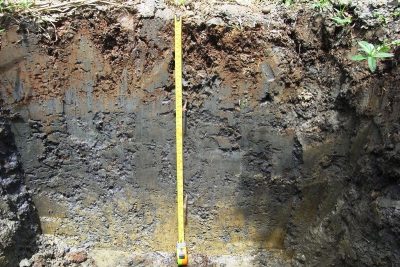What if the Secret to Sustainable Cities Was Buried in Roman Cement? – ZME Science

Report on the Sustainability of Ancient Roman Concrete in the Context of Modern Sustainable Development Goals
An analysis of ancient Roman concrete has been conducted to assess its potential as a sustainable alternative to modern construction materials. This investigation is framed within the context of the United Nations Sustainable Development Goals (SDGs), particularly those concerning infrastructure, climate action, and sustainable production.
1.0 Comparative Analysis of Roman and Modern Concrete
The enduring nature of Roman structures, such as the Pantheon and ancient aqueducts, has prompted research into the composition and production of their concrete, questioning if it offers a more sustainable model for achieving SDG 9 (Industry, Innovation and Infrastructure) and SDG 11 (Sustainable Cities and Communities).
1.1 Production Methods
- Modern Portland Cement: Produced by heating limestone and clays to approximately 1,450°C. This process is energy-intensive and a significant contributor to global carbon emissions, challenging the objectives of SDG 13 (Climate Action).
- Roman Concrete: Utilized a lime-based mortar created by heating limestone to a lower temperature of around 900°C. This was then mixed with water and pozzolanic volcanic ash, which acted as a resilient binder.
1.2 Environmental Impact Assessment
A study modeling the energy, water, and emissions of Roman concrete production yielded complex results regarding its sustainability profile.
- Carbon Dioxide Emissions: The research found that producing Roman-style concrete, even with modern technology, resulted in comparable or often higher CO2 emissions per cubic meter than modern Portland cement. This finding indicates that a simple return to Roman formulations may not support SDG 13 (Climate Action).
- Air Pollutant Reduction: A significant benefit was identified in the reduction of harmful air pollutants. The Roman production method could cut nitrogen and sulfur oxide emissions by 11% to 98%. This directly contributes to SDG 3 (Good Health and Well-being) by improving air quality.
2.0 The Role of Durability in Sustainable Infrastructure
The primary advantage of Roman concrete lies in its exceptional longevity, a key component of sustainable infrastructure as outlined in SDG 9.
2.1 Longevity vs. Initial Emissions
Modern concrete structures often require replacement within decades, whereas Roman structures have endured for millennia. The report calculates a break-even point for sustainability:
- For an application like a road, Roman-style concrete would need to last 29% to 97% longer than its modern equivalent to offset its higher initial production emissions.
- The historical evidence of two-millennia-old structures suggests this durability is achievable, making it a potentially superior long-term investment for climate-resilient infrastructure.
2.2 Critical Considerations
Direct comparisons must be made with caution. Roman concrete was unreinforced, whereas the corrosion of steel reinforcement is a primary cause of deterioration in modern concrete. Furthermore, ancient structures were not subjected to the same type and intensity of use as modern infrastructure.
3.0 Lessons for Achieving Sustainable Development Goals
The study concludes that while a wholesale adoption of Roman concrete is not the solution, valuable lessons can be applied to modern practices to advance global sustainability targets.
3.1 A Hybrid Approach to Sustainable Construction
The most effective path forward involves a hybrid strategy that aligns with SDG 12 (Responsible Consumption and Production). This approach would:
- Integrate the Roman principle of extreme durability into modern engineering.
- Focus on decarbonizing modern cement production through alternative fuels and innovative technologies.
- Adopt material formulations that maximize structural longevity, thereby reducing the lifecycle environmental impact.
By combining ancient principles of permanence with modern innovation, the construction industry can create a more sustainable built environment that is resilient, resource-efficient, and aligned with the core objectives of the Sustainable Development Goals.
Analysis of Sustainable Development Goals in the Article
1. Which SDGs are addressed or connected to the issues highlighted in the article?
The article on Roman and modern concrete touches upon several Sustainable Development Goals by examining the environmental impact, durability, and production processes of a critical construction material. The following SDGs are relevant:
- SDG 3: Good Health and Well-being: The article connects concrete production to air quality, which directly impacts human health.
- SDG 9: Industry, Innovation and Infrastructure: The core topic is infrastructure (roads, buildings, harbors) and the innovation in materials (concrete) used to build it, focusing on sustainability and resilience.
- SDG 11: Sustainable Cities and Communities: The discussion revolves around creating a “sustainable built environment” and reducing the environmental impact of materials that form the backbone of cities.
- SDG 12: Responsible Consumption and Production: The article analyzes and compares the production patterns of Roman and modern concrete, focusing on energy consumption, emissions, and resource efficiency.
- SDG 13: Climate Action: A primary concern of the article is the climate impact of concrete production, specifically its significant contribution to global carbon dioxide emissions and the search for “greener” alternatives.
2. What specific targets under those SDGs can be identified based on the article’s content?
Based on the issues discussed, several specific SDG targets can be identified:
- SDG 9: Industry, Innovation and Infrastructure
- Target 9.1: Develop quality, reliable, sustainable and resilient infrastructure. The article directly addresses this by highlighting the resilience and longevity of Roman infrastructure, such as the Pantheon and aqueducts, which have “stood tall and proud for nearly two millennia.” It explores whether these principles of durability can be applied to modern construction to enhance sustainability.
- Target 9.4: Upgrade infrastructure and retrofit industries to make them sustainable, with increased resource-use efficiency and greater adoption of clean and environmentally sound technologies. The research described in the article is a direct exploration of this target. It questions whether Roman concrete is a “greener” technology and analyzes its production in terms of energy and emissions, concluding that a “hybrid approach that marries ancient principles of longevity with modern technological advances” may be the most effective path.
- SDG 11: Sustainable Cities and Communities
- Target 11.6: Reduce the adverse per capita environmental impact of cities, including by paying special attention to air quality. The article notes that while Roman concrete production might not reduce CO2 emissions, it “would lead to a sharp drop in air pollutants like nitrogen and sulfur oxides.” This directly relates to improving urban air quality.
- SDG 12: Responsible Consumption and Production
- Target 12.2: Achieve the sustainable management and efficient use of natural resources. The study “modeled the energy, water, and emissions required to produce various Roman concrete recipes,” which is an analysis of resource efficiency in production.
- SDG 13: Climate Action
- Target 13.2: Integrate climate change measures into national policies, strategies and planning. The article frames the research within the “urgent race to decarbonize,” highlighting how the construction industry is seeking to mitigate its climate impact. The analysis of CO2 emissions from cement production, which accounts for “roughly 8% of global carbon dioxide emissions,” is a direct response to the need for climate action in industrial planning.
- SDG 3: Good Health and Well-being
- Target 3.9: Substantially reduce the number of deaths and illnesses from hazardous chemicals and air, water and soil pollution and contamination. The article explicitly mentions that the Roman production method could cut emissions of “nitrogen and sulfur oxides — harmful gases that contribute to respiratory disease,” thereby contributing to this target by reducing air pollution.
3. Are there any indicators mentioned or implied in the article that can be used to measure progress towards the identified targets?
Yes, the article mentions and implies several indicators that can be used to measure progress:
- CO2 emissions from manufacturing industries: This is a primary indicator mentioned in the article. It states that modern cement production is “responsible for roughly 8% of global carbon dioxide emissions” and the study’s main goal was to see if Roman concrete could offer “substantial reductions in emissions.” This directly measures progress for SDG 9, 12, and 13.
- Air pollutant emissions: The article specifies that the Roman method could cut emissions of “nitrogen and sulfur oxides” by “11% to as much as 98%.” These pollutants are key indicators for measuring air quality and its impact on health, relevant to SDG 3 and 11.
- Energy consumption per unit of production: The article describes modern cement production as a “voracious consumer of energy” and notes the study modeled the “energy… required to produce” different types of concrete. This is an indicator of resource-use efficiency under SDG 9 and 12.
- Longevity and durability of infrastructure: The article implies this as a crucial sustainability indicator. It contrasts modern structures needing replacement “within decades” with Roman structures lasting “for centuries.” The break-even analysis, which states Roman concrete would need to “last between 29% and 97% longer” to be greener, uses durability as a quantifiable measure of sustainability for SDG 9.
4. Summary Table of SDGs, Targets, and Indicators
| SDGs | Targets | Indicators Identified in the Article |
|---|---|---|
| SDG 3: Good Health and Well-being | 3.9: Substantially reduce deaths and illnesses from hazardous chemicals and air pollution. | Reduction in emissions of air pollutants like nitrogen and sulfur oxides, which are “harmful gases that contribute to respiratory disease.” |
| SDG 9: Industry, Innovation and Infrastructure | 9.1: Develop quality, reliable, sustainable and resilient infrastructure. 9.4: Upgrade industries to make them sustainable and increase resource-use efficiency. |
– Longevity/durability of infrastructure (lasting “centuries” vs. “decades”). – Energy consumption in the production process. – CO2 emissions per cubic meter of concrete produced. |
| SDG 11: Sustainable Cities and Communities | 11.6: Reduce the adverse per capita environmental impact of cities, especially regarding air quality. | Level of air pollutants (nitrogen and sulfur oxides) generated by the production of building materials used in cities. |
| SDG 12: Responsible Consumption and Production | 12.2: Achieve the sustainable management and efficient use of natural resources. | – Amount of energy and water required for production. – Level of CO2 emissions from the production process. |
| SDG 13: Climate Action | 13.2: Integrate climate change measures into policies and planning. | Total CO2 emissions from the cement/concrete industry (mentioned as “8% of global carbon dioxide emissions”). |
Source: zmescience.com

What is Your Reaction?
 Like
0
Like
0
 Dislike
0
Dislike
0
 Love
0
Love
0
 Funny
0
Funny
0
 Angry
0
Angry
0
 Sad
0
Sad
0
 Wow
0
Wow
0



























;Resize=805#)



















































